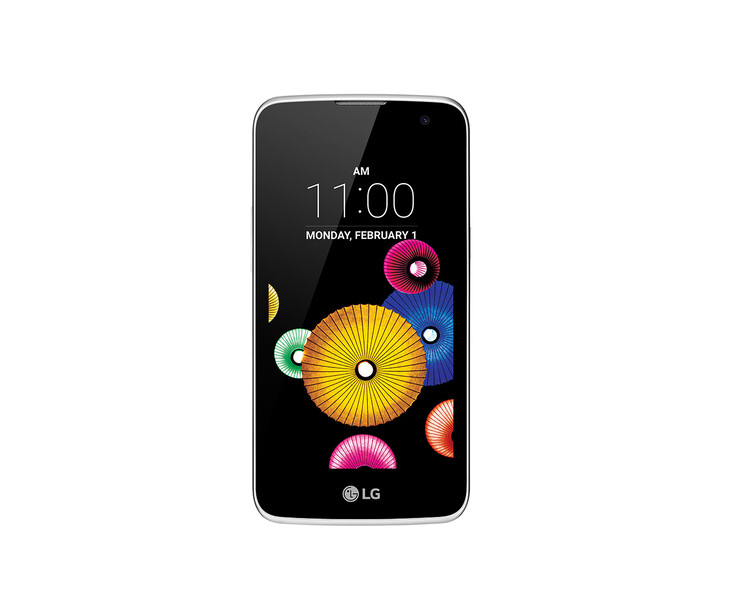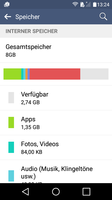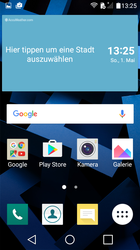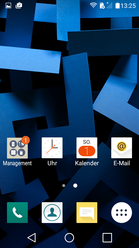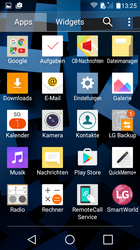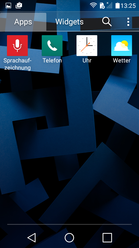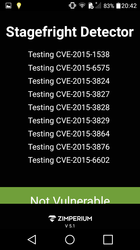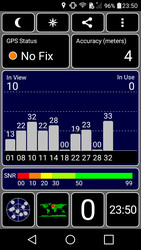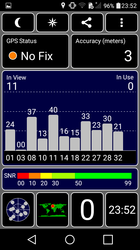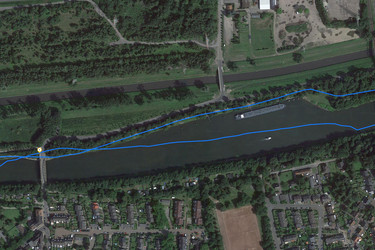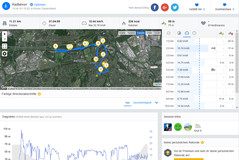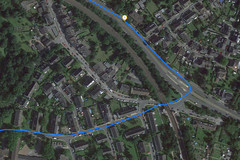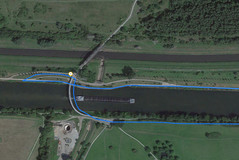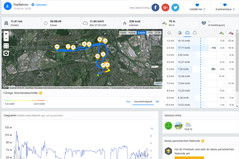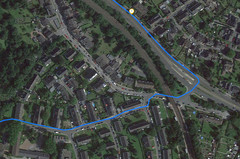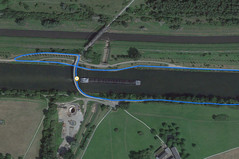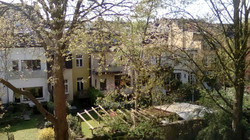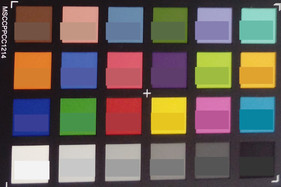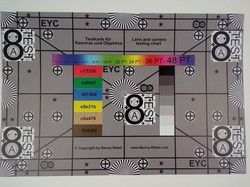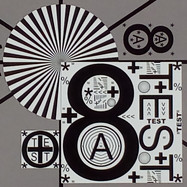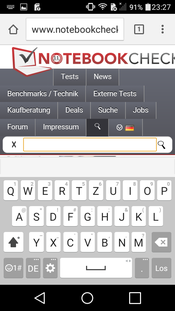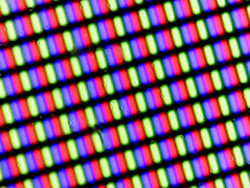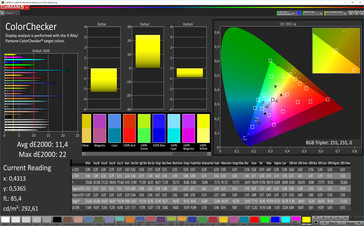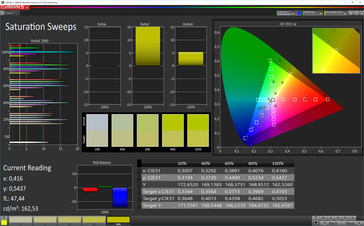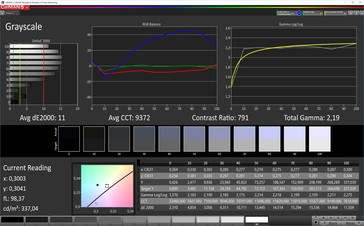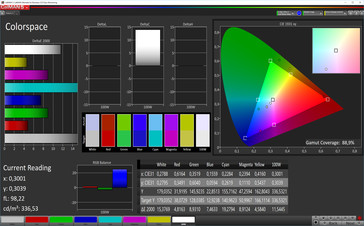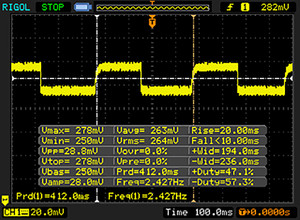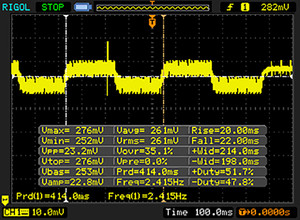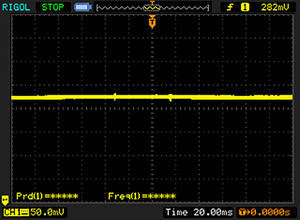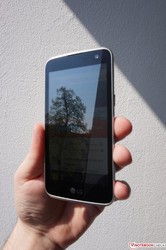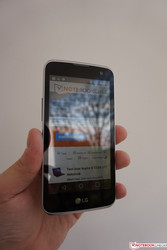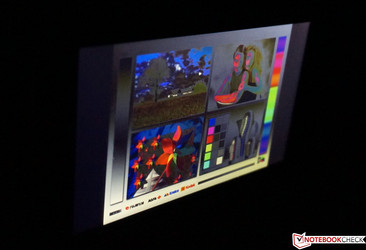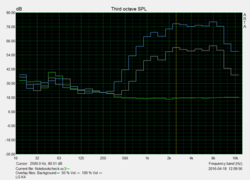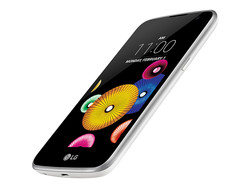LG K4 Smartphone Review

For the original German review, see here.
The K4 is the second handset from LG's new K lineup. We recently tested the K10 and were only moderately impressed. At an RRP of 119 Euros (~$133), our present K4 is the lower-priced model, and it is currently sold for just below 110 Euros (~$123) on the Internet. The configuration fits to an entry-level device: quad-core SoC with lowered clock, 1 GB of RAM, 8 GB of storage and a small 4.5-inch screen with a meager resolution of 854x480 pixels. The only obvious highlight is LTE support.
Many manufacturers have very affordable devices, for example Microsoft's Lumia 550, Doogee's Nova Y100X and even LG's own Bello II. Some mid-range handsets from last year, which are now only marginally more expensive but offer more features and better equipment, might also be interesting. Potential contestants are Motorola's Moto G3 and LG's G4c.
Case
As to be expected, LG relies on a plastic casing in black and silver. The rear also features a light texture that slightly improves handling. The smartphone nevertheless looks a bit "old-fashioned". The tightly fitted back cover conceals the removable battery and both slots for the micro-SIM and micro-SD card. The battery does not have to be removed for replacing the SIM card.
The casing's stiffness is satisfactory, which is also owed to the somewhat thicker build (8.9 mm). Although we could provoke cracking noises and wave formation on the screen with pressure, the casing's performance will suffice for routine use. Both physical buttons (power button and volume control) are a bit wobbly. Otherwise, the smartphone is well-built. LG also offers a white model as an alternative to our indigo (blue) model.
Connectivity
The connectivity of LG's K4 is limited to the minimum. The micro-USB 2.0 port can only be used for charging and connecting to a PC. OTG for connecting USB flash drives or input devices is not supported. A 3.5 mm audio jack is, of course, also present on the lower edge. Bluetooth version 4.1 and Wi-Fi Direct are available for connecting to other devices. An optional headset will be needed for the FM radio.
The internal storage only has a capacity of 8 GB, and only 3.9 GB is available after initial use. However, updating the preloaded apps reduces the capacity to just 2.7 GB. At least the storage can be expanded via a micro-SD card. The manufacturer states a maximum capacity of 32 GB, but the smartphone also identified our 64 GB reference card. Installed apps can be moved to the SD card.
Software
Like the bigger K10, LG ships the K4 with Android 5.1.1. A software update to the latest Android 6 is presently not available, and the manufacturer has not yet made any statements concerning this. The stock Android user interface has not been modified greatly; only the design has been changed slightly in some points. The usual Google apps and some manufacturer tools known from other models (see screenshot) are preloaded. The folder "Management" is interesting as it allows accessing all important settings, including backup.
Communication & GPS
Thanks to LTE Cat. 4, mobile Internet connections with up to 150 Mbit/s downstream (50 Mbit/s upstream) are possible and gives LG's K4 an advantage over many entry-level models. However, the frequency coverage is very low especially in the UMTS network. We did not experience any reception issues at least in the urban T-Mobile network. Wi-Fi connections are limited to the 802.11 b/g/n standards in the 2.4 GHz band. We could easily connect the smartphone with both of our test routers Fritz!Box 7490 and Asus RT-AC56U, and the signal strength was good subjectively. Interruption or even signal losses did not occur during the test.
A GPS receiver is also integrated, but its reception was very weak. Although satellites were found inside the apartment, we could not be localized. Surprisingly, that was also the case in our usual place in the garden. We have not yet observed this with another smartphone. However, our bike tour proves that GPS tracking functions. Here, we compare the smartphone with Garmin's Edge 500 bike navigation system. At first glance, everything seems okay; the deviation is approximately 300 meters on our 11 km test route. When looking at the outcomes more closely, problems become apparent as we allegedly rode through water according to the data. The performance should normally be sufficient for use in a car, but better solutions exist for geo-tagging or bike tours.
Telephone & Call Quality
The phone app's design is very basic and offers a total of five different tabs (dial, call list, contacts, favorites and groups). A link to the notification app is also found in the keypad. The call quality was acceptable; we occasionally noticed quiet background noises that did not affect intelligibility. A hands-free mode is also integrated and functions although the microphone is a bit quiet. Consequently, the handset should not be held too far away from the mouth.
Cameras
A 2 MP camera is installed in the front. The photos correspondingly lack detail and colors also look very pale. A feature is the so-called selfie cam function. The thumbnail is scaled down and the empty screen area lights up in white to serve as a kind of photo lamp. In contrast to the solutions of other manufacturers, the brightness is not increased and the effect is virtually non-existent. Generally, low-light photos are very dark.
LG incorporates a 5 MP lens alongside auto-focus on the rear. The results are not at all bad in good light conditions, but the photos tend to look darker than those taken with the comparison devices. The sensor also has problems in low light. We observe high image noise that consequently absorbs many details. Videos can be recorded in the HD resolution at maximum (1280x720 pixels, 30 FPS). The lens particularly has problems with fast panning, and image noise also prevails again in low light conditions.
We also check the color reproduction and sharpness of the photos under defined test conditions. The photos are not edited afterward. LG's K4 does not do a bad job with the colors although the reproduction of some colors is too pale. The camera's relatively low resolution becomes especially evident at the edges of the test chart.
Accessories & Warranty
The smartphone, battery, modular power supply and a USB cable are found in the box of LG's K4 LTE. The customer also finds a quick-start guide and a paper with warranty conditions. A headset is not included.
The smartphone comes with a warranty period of 24 months; the battery and charger are only covered for 6 months.
Input Devices & Handling
Although LG installs a capacitive touchscreen, it can only process two inputs simultaneously. The gliding traits are also only satisfactory. Inputs are often not identified correctly primarily at the edges. The virtual keyboard dubbed "LG Keyboard" can be customized to a very limited degree and does not support all common functions. For example, swiping is not supported, and the keys are also overall very small. Of course, other keyboard layouts can be installed from the Play Store, but the small screen will hardly be suitable for prolonged use. The onscreen Android buttons are also annoying as they further reduce the limited space.
Display
The 4.5-inch screen is based on TN technology and has a resolution of 854x480 pixels. That equals a pixel density of 218 PPI. It is already noticed that the panel is inferior when used for the first time. The maximum brightness of 364 cd/m² is acceptable (APL 50: 343 cd/m²), but the contrast ratio of 766:1 is at the lower end of the comparison field. The screen simply lacks brilliance and sharpness compared with other, good panels. Furthermore, it displays a visible bluish tint. A light sensor is not installed, and thus the brightness always has to be adapted to the surroundings manually.
| |||||||||||||||||||||||||
Brightness Distribution: 92 %
Center on Battery: 337 cd/m²
Contrast: 766:1 (Black: 0.44 cd/m²)
ΔE Color 11.4 | 0.5-29.43 Ø5
ΔE Greyscale 11 | 0.57-98 Ø5.3
Gamma: 2.19
| LG K4 4.50, 854x480 | Microsoft Lumia 550 4.70, 1280x720 | Doogee Nova Y100X 5.00, 1280x720 | LG Bello II 5.00, 854x480 | Motorola Moto G 3. Gen 2015 XT1541 5.00, 1280x720 | LG G4c 5.00, 1280x720 | |
|---|---|---|---|---|---|---|
| Screen | 27% | 1% | 21% | 25% | 23% | |
| Brightness middle | 337 | 536 59% | 387.9 15% | 333 -1% | 418 24% | 480 42% |
| Brightness | 342 | 535 56% | 390 14% | 333 -3% | 407 19% | 464 36% |
| Brightness Distribution | 92 | 95 3% | 91 -1% | 90 -2% | 95 3% | 92 0% |
| Black Level * | 0.44 | 0.62 -41% | 0.583 -33% | 0.23 48% | 0.49 -11% | 0.49 -11% |
| Contrast | 766 | 865 13% | 665 -13% | 1448 89% | 853 11% | 980 28% |
| Colorchecker dE 2000 * | 11.4 | 5.81 49% | 9.91 13% | 9.41 17% | 3.92 66% | 8.13 29% |
| Colorchecker dE 2000 max. * | 22 | 12.3 44% | ||||
| Greyscale dE 2000 * | 11 | 7.72 30% | 10.04 9% | 11.15 -1% | 3.81 65% | 6.73 39% |
| Gamma | 2.19 100% | 2.18 101% | 2.53 87% | 2.17 101% | 2.27 97% | 2.69 82% |
| CCT | 9372 69% | 8701 75% | 10336 63% | 12959 50% | 7361 88% | 7727 84% |
| Color Space (Percent of sRGB) | 70.038 |
* ... smaller is better
Our other display measurements confirm the subjective impression. The bluish tint becomes very evident in the grayscale levels, which also fits to the very cool color temperature. The average DeltaE 2000 shifts compared with the sRGB color space are very high with 11.4 in colors (max. 22) and 11 in grayscale.
Display Response Times
| ↔ Response Time Black to White | ||
|---|---|---|
| 30 ms ... rise ↗ and fall ↘ combined | ↗ 20 ms rise | |
| ↘ 10 ms fall | ||
| The screen shows slow response rates in our tests and will be unsatisfactory for gamers. In comparison, all tested devices range from 0.1 (minimum) to 240 (maximum) ms. » 77 % of all devices are better. This means that the measured response time is worse than the average of all tested devices (21.5 ms). | ||
| ↔ Response Time 50% Grey to 80% Grey | ||
| 42 ms ... rise ↗ and fall ↘ combined | ↗ 20 ms rise | |
| ↘ 22 ms fall | ||
| The screen shows slow response rates in our tests and will be unsatisfactory for gamers. In comparison, all tested devices range from 0.2 (minimum) to 636 (maximum) ms. » 63 % of all devices are better. This means that the measured response time is worse than the average of all tested devices (33.7 ms). | ||
Screen Flickering / PWM (Pulse-Width Modulation)
| Screen flickering / PWM not detected | |||
In comparison: 53 % of all tested devices do not use PWM to dim the display. If PWM was detected, an average of 17900 (minimum: 5 - maximum: 3846000) Hz was measured. | |||
Reflections on the screen should definitely be avoided outdoors so that some content remains visible. The brightness would have to be much higher here. A big problem for LG's K4 is the viewing-angle stability of the TN panel. Brightness aberrations and color inversions are very annoying for practical use especially in a smartphone that is clearly moved more often than a laptop.
Performance
In contrast to the reference design, the four cores of Mediatek's MT6735 SoC in LG's K4 do not clock at 1.5 but at just 1 GHz. The ARM Mali T720 MP2 takes care of processing graphics. The review sample could normally take a lead on its direct rivals in the benchmarks, but the older mid-range models often have considerably more power.
More power would also be appreciated in routine use. The entire handling is rather sluggish, and that is all the truer with more complex websites or in demanding apps.
| AnTuTu v6 - Total Score (sort by value) | |
| LG K4 | |
| Microsoft Lumia 550 | |
| LG Bello II | |
| Geekbench 3 | |
| 32 Bit Single-Core Score (sort by value) | |
| LG K4 | |
| LG Bello II | |
| Motorola Moto G 3. Gen 2015 XT1541 | |
| LG G4c | |
| 32 Bit Multi-Core Score (sort by value) | |
| LG K4 | |
| LG Bello II | |
| Motorola Moto G 3. Gen 2015 XT1541 | |
| LG G4c | |
| GFXBench (DX / GLBenchmark) 2.7 | |
| T-Rex Onscreen (sort by value) | |
| LG K4 | |
| Microsoft Lumia 550 | |
| LG Bello II | |
| Motorola Moto G 3. Gen 2015 XT1541 | |
| LG G4c | |
| 1920x1080 T-Rex Offscreen (sort by value) | |
| LG K4 | |
| Microsoft Lumia 550 | |
| LG Bello II | |
| Motorola Moto G 3. Gen 2015 XT1541 | |
| LG G4c | |
| GFXBench 3.0 | |
| on screen Manhattan Onscreen OGL (sort by value) | |
| LG K4 | |
| LG Bello II | |
| Motorola Moto G 3. Gen 2015 XT1541 | |
| LG G4c | |
| 1920x1080 1080p Manhattan Offscreen (sort by value) | |
| LG K4 | |
| LG Bello II | |
| Motorola Moto G 3. Gen 2015 XT1541 | |
| LG G4c | |
| GFXBench 3.1 - on screen Manhattan ES 3.1 Onscreen (sort by value) | |
| LG K4 | |
| PCMark for Android - Work performance score (sort by value) | |
| LG K4 | |
| Doogee Nova Y100X | |
| Motorola Moto G 3. Gen 2015 XT1541 | |
| LG G4c | |
| Octane V2 - Total Score (sort by value) | |
| LG K4 | |
| Microsoft Lumia 550 | |
| Doogee Nova Y100X | |
| LG Bello II | |
| Motorola Moto G 3. Gen 2015 XT1541 | |
| LG G4c | |
| Mozilla Kraken 1.1 - Total (sort by value) | |
| LG K4 | |
| Microsoft Lumia 550 | |
| Doogee Nova Y100X | |
| LG Bello II | |
| Motorola Moto G 3. Gen 2015 XT1541 | |
| LG G4c | |
| JetStream 1.1 - Total Score (sort by value) | |
| LG K4 | |
| Microsoft Lumia 550 | |
| Doogee Nova Y100X | |
| Motorola Moto G 3. Gen 2015 XT1541 | |
* ... smaller is better
Many rivals present us with a similar storage performance impression: Good read performances but poor write performances (both sequential and 4K). The memory-card reader does not break any speed records, either. Of our Toshiba Exceria Pro M401 reference card's maximum 95 (read) and 80 (write) MB/s, only 29 and 19 MB/s are left.
| AndroBench 3-5 | |
| Sequential Write 256KB SDCard (sort by value) | |
| LG K4 | |
| Sequential Read 256KB SDCard (sort by value) | |
| LG K4 | |
| Random Write 4KB (sort by value) | |
| LG K4 | |
| Doogee Nova Y100X | |
| LG Bello II | |
| Motorola Moto G 3. Gen 2015 XT1541 | |
| LG G4c | |
| Random Read 4KB (sort by value) | |
| LG K4 | |
| Doogee Nova Y100X | |
| LG Bello II | |
| Motorola Moto G 3. Gen 2015 XT1541 | |
| LG G4c | |
| Sequential Write 256KB (sort by value) | |
| LG K4 | |
| Doogee Nova Y100X | |
| LG Bello II | |
| Motorola Moto G 3. Gen 2015 XT1541 | |
| LG G4c | |
| Sequential Read 256KB (sort by value) | |
| LG K4 | |
| Doogee Nova Y100X | |
| LG Bello II | |
| Motorola Moto G 3. Gen 2015 XT1541 | |
| LG G4c | |
Games
The biggest problem with current games is the low storage capacity of LG's K4, and thus it is hardly possible to install several storage-inclined games. The review sample benefits from the screen's low resolution in games. Even the demanding racing game Asphalt 8: Airborne can be played reasonably in medium details, although the loading times are unpleasantly long. More basic games like Doodle Jump are not a problem from the outset. Unfortunately, the rear-sided speaker is easily covered by the hand during games.
Emissions
Temperature
LG's K4 does not even get lukewarm during idle or low load. Primarily the upper area gets warm during load. We measured almost 40 °C here. That should not be a problem since the smartphone will mostly be held at its lower end. The left hand gets noticeably warmer when gaming in landscape mode. The temperature difference might be somewhat unpleasant. However, that does not involve restrictions.
(±) The maximum temperature on the upper side is 40.3 °C / 105 F, compared to the average of 35 °C / 95 F, ranging from 21.9 to 56 °C for the class Smartphone.
(+) The bottom heats up to a maximum of 39.7 °C / 103 F, compared to the average of 33.8 °C / 93 F
(+) In idle usage, the average temperature for the upper side is 31.2 °C / 88 F, compared to the device average of 32.7 °C / 91 F.
Speaker
The little rear-sided mono speaker can get really loud with almost 90 dB(A), but it starts to hum at about 50% of the maximum volume. Furthermore, the sound is very treble-heavy as expected. The sound could also muffle on soft surfaces or a table due to its positioning. Sound-enhancing software is not preloaded. External speakers or headphones can be connected via Bluetooth or the 3.5 mm jack. Playback via audio jack is low-noise and sufficiently loud with mobile headphones.
Energy Management
Power Consumption
No major irregularities were presented in the consumption measurements. Only the idle consumption could be a bit lower. The maximum requirement is 3.25 watts. The included 4.25 watt power supply is sufficiently sized for that.
| Off / Standby | |
| Idle | |
| Load |
|
| LG K4 Mali-T720, MT6735, 8 GB eMMC Flash | Microsoft Lumia 550 Adreno 304, 210 MSM8909, 8 GB eMMC Flash | LG Bello II Mali-400 MP2, MT6582, 8 GB eMMC Flash | Motorola Moto G 3. Gen 2015 XT1541 Adreno 306, 410 MSM8916, 8 GB eMMC Flash | |
|---|---|---|---|---|
| Power Consumption | -28% | 32% | 15% | |
| Idle Minimum * | 1.15 | 0.55 52% | 0.6 48% | 0.4 65% |
| Idle Average * | 1.76 | 2.69 -53% | 1.1 37% | 1 43% |
| Idle Maximum * | 1.82 | 2.93 -61% | 1.3 29% | 1.2 34% |
| Load Average * | 2.71 | 3.94 -45% | 2.1 23% | 2.9 -7% |
| Load Maximum * | 3.15 | 4.24 -35% | 2.5 21% | 5 -59% |
* ... smaller is better
Battery Runtime
The removable lithium-ion battery has a capacity of 7.4 watt hours and achieves a good runtime of 7.5 hours in our practical Wi-Fi test using a screen brightness adapted to 150 cd/m². The device thus takes a place in the midfield of our comparison group.
| LG K4 Mali-T720, MT6735, 8 GB eMMC Flash | Microsoft Lumia 550 Adreno 304, 210 MSM8909, 8 GB eMMC Flash | Doogee Nova Y100X Mali-400 MP, MT6582, 8 GB eMMC Flash | LG Bello II Mali-400 MP2, MT6582, 8 GB eMMC Flash | Motorola Moto G 3. Gen 2015 XT1541 Adreno 306, 410 MSM8916, 8 GB eMMC Flash | LG G4c Adreno 306, 410 MSM8916, 8 GB eMMC Flash | |
|---|---|---|---|---|---|---|
| Battery Runtime | ||||||
| WiFi v1.3 | 452 | 445 -2% | 258 -43% | 797 76% | 526 16% | 457 1% |
Pros
Cons
Verdict
LG's K4 aims to be an affordable companion, but the handset did not impress us in the test. The smartphone conveys a feel as if it actually emerged in 2012. That is true for the inferior screen, sluggish handling and the equipment. The only highlight is LTE support. We of course know that no miracles can be expected for 119 Euros (~$133), and that the targeted buyer group will unlikely have high demands, but we cannot recommend LG's K4 even then. It is definitely worthwhile to examine price comparisons and invest a bit more money in an affordable mid-range model from last year. The direct rival, Microsoft's Lumia 550, also makes a much better impression with its HD panel.
LG K4
-
05/13/2016 v5.1(old)
Andreas Osthoff


 Deutsch
Deutsch English
English Español
Español Français
Français Italiano
Italiano Nederlands
Nederlands Polski
Polski Português
Português Русский
Русский Türkçe
Türkçe Svenska
Svenska Chinese
Chinese Magyar
Magyar